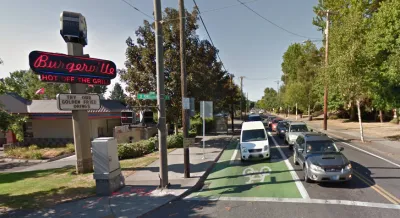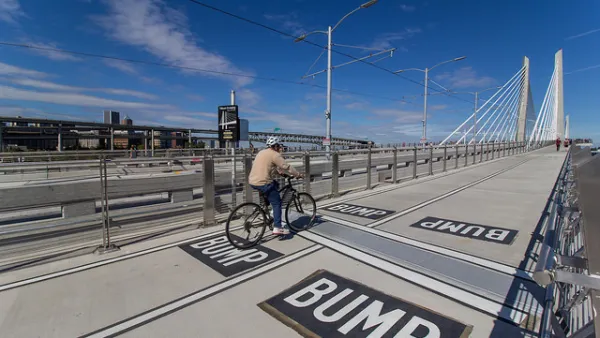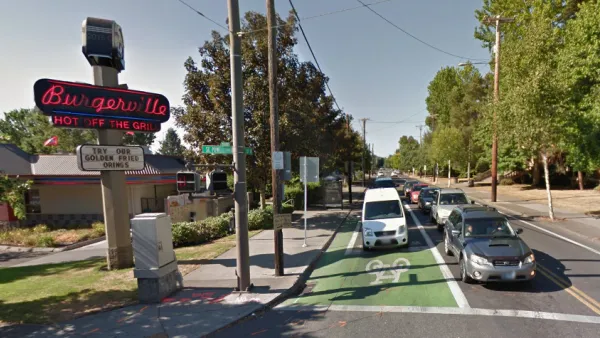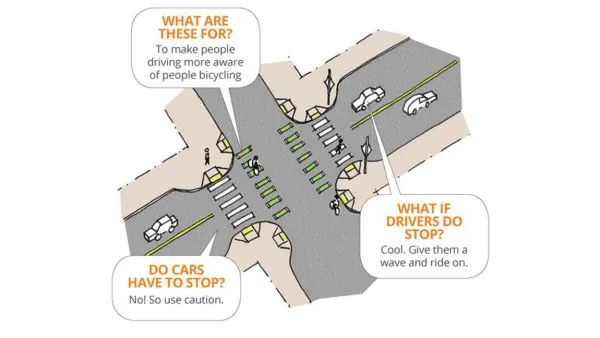A bike advocate tells the story of the how the state department of transportation convinced local officials to remove a popular bike lane in Portland.

"Two of southeast Portland’s most-ridden bike lanes are slated to be removed at the insistence of the state of Oregon," reports Michael Andersen.
According to Andersen, the "[bike lanes on each side of Southeast 26th Avenue near Powell draw something like 600 to 800 people per day (even in winter) and run in front of Cleveland High School. They will be paved over sometime in the coming months and not replaced." The decision comes from the Oregon Department of Transportation (ODOT), which announced the project last week.
The city of Portland, however, had to accept the decision of the state to remove the lane, despite disagreement over the potential safety impacts. The ODOT believes that removing the bike lane will improve safety at the intersection of SE Powell at SE 26th by reducing the number of bicycles on the street. Many bike riders, according to an ODOT spokesperson, will switch to 28th Avenue instead "when a new traffic signal and neighborhood greenway are installed there in the coming months."
Andersen clearly opposes the removals, providing several examples of evidence and policy maxims that contradict the claims made by the ODOT. By providing a lot more information on this specific example and the other projects and events that led to the decision to pave over the lanes, Andersen also provides an unfortunate case study of a city and a state failing to resolve differences in their approaches to streets.
FULL STORY: City gives in to state demand to remove bike lanes from SE 26th Avenue

National Parks Layoffs Will Cause Communities to Lose Billions
Thousands of essential park workers were laid off this week, just before the busy spring break season.

Retro-silient?: America’s First “Eco-burb,” The Woodlands Turns 50
A master-planned community north of Houston offers lessons on green infrastructure and resilient design, but falls short of its founder’s lofty affordability and walkability goals.

Delivering for America Plan Will Downgrade Mail Service in at Least 49.5 Percent of Zip Codes
Republican and Democrat lawmakers criticize the plan for its disproportionate negative impact on rural communities.

Test News Post 1
This is a summary

Test News Headline 46
Test for the image on the front page.

Balancing Bombs and Butterflies: How the National Guard Protects a Rare Species
The National Guard at Fort Indiantown Gap uses GIS technology and land management strategies to balance military training with conservation efforts, ensuring the survival of the rare eastern regal fritillary butterfly.
Urban Design for Planners 1: Software Tools
This six-course series explores essential urban design concepts using open source software and equips planners with the tools they need to participate fully in the urban design process.
Planning for Universal Design
Learn the tools for implementing Universal Design in planning regulations.
EMC Planning Group, Inc.
Planetizen
Planetizen
Mpact (formerly Rail~Volution)
Great Falls Development Authority, Inc.
HUDs Office of Policy Development and Research
NYU Wagner Graduate School of Public Service





























